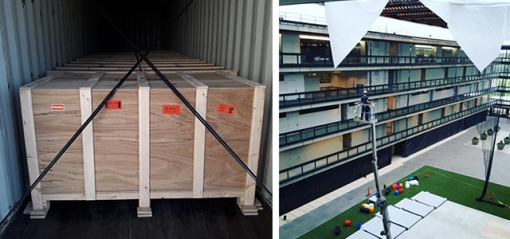A majority of green building industry professionals in the US jointly surveyed by the Green Building Insider, Allen Matkins, and the Constructive Technologies Group (CTG) have firmly endorsed their support for green building projects despite the recession, owing to their advantages such as savings in energy and operational expenses. Over 1,600 construction and design professionals across the US participated in the Fourth Annual Green Building Survey, which analyzed present-day attitudes on trends, expenses, construction, certification processes, and risks related to green building projects.
Green building is considered to be more prone to construction risks, in spite of the fact that building tests ordered by LEED help in the reduction of risks caused by building failure. As per the survey, the key steps to ensure the reduction of building system failure risks include employing green consultants such as LEED-AP consultants, measuring and re-commissioning, testing the green building periodically, and contractual risk shifting.
In contrast, the survey reported a decrease in respondent support for LEED certification, as compared to surveys conducted in 2008 and 2009. The gap between LEED certification and endorsement for green construction has been widening for the last two years.
LEED certification was introduced by the US Green Building Council with the goal to represent the top 25% of construction projects in the US. As compared to this initial goal, the present LEED support level is high. The economic downturn posed hurdles to the construction of green buildings. However, the economic situation forced green building projects to evaluate financial benefits including saving energy and operational costs of green building projects.
The Green Survey has provided a reasonable pulse of respondents, related to expenses, risks, and importance of the green building sector, according to Bryan Jackson, editor of the Green Building Update, Adjunct Professor with USC teaching Green and Sustainable Construction, and chair of Green and Sustainable Construction Practice Group of Allen Matkins. Jackson added that this survey, covering the most rapidly growing construction sector, is among the largest surveys of professionals in the green building industry.
More than 50% of green building professionals felt that the LEED Gold rating increased green building project expenses by more than 4%, and around 30% reported LEED Gold rating expenses as less than 4%. Reasons for such expense variations could be due to the difference in the level of problems encountered in awarding LEED Gold standards for different buildings, such as corporate buildings versus hotels, as well as the multiplicity of local codes and difference in particular regions that enhance the minimum green energy standards to close on LEED Gold standards.
Source: AZO Cleantech






